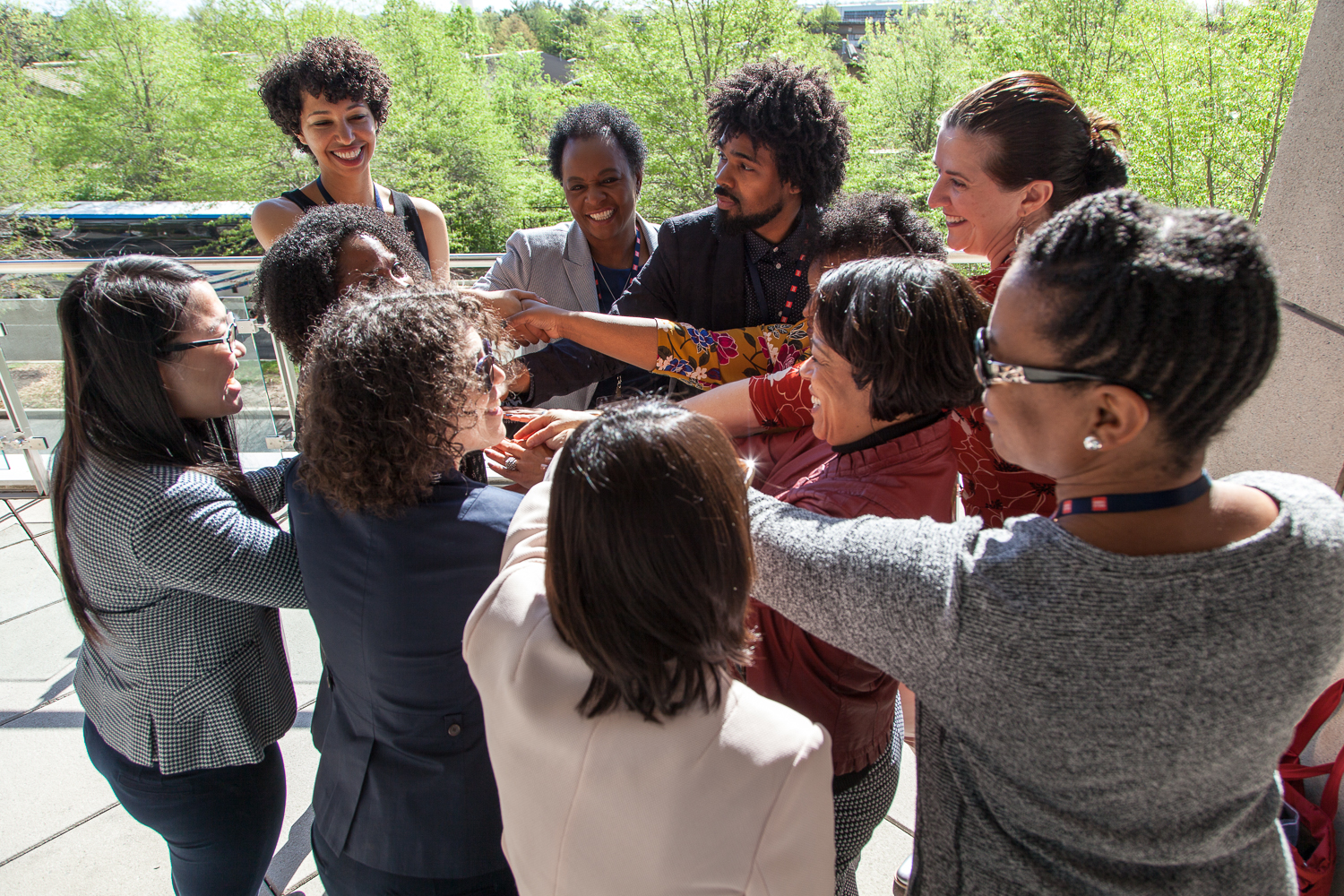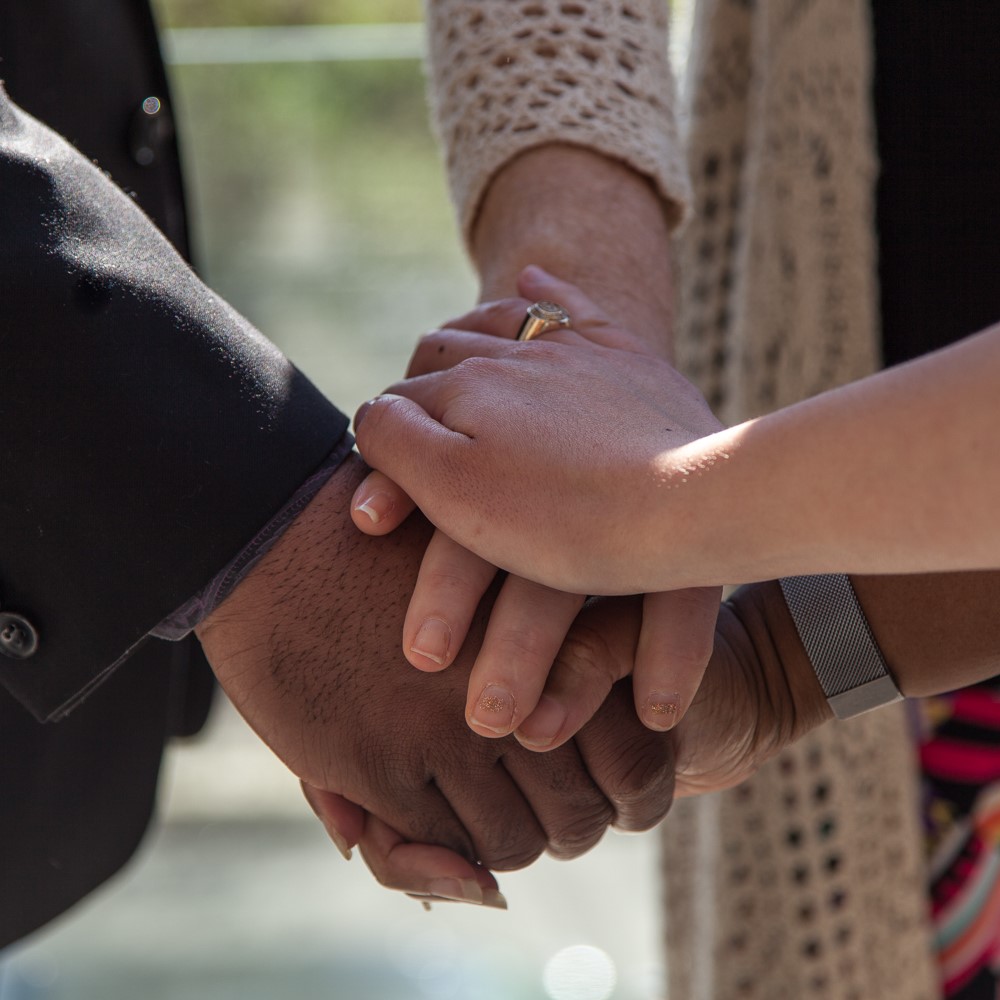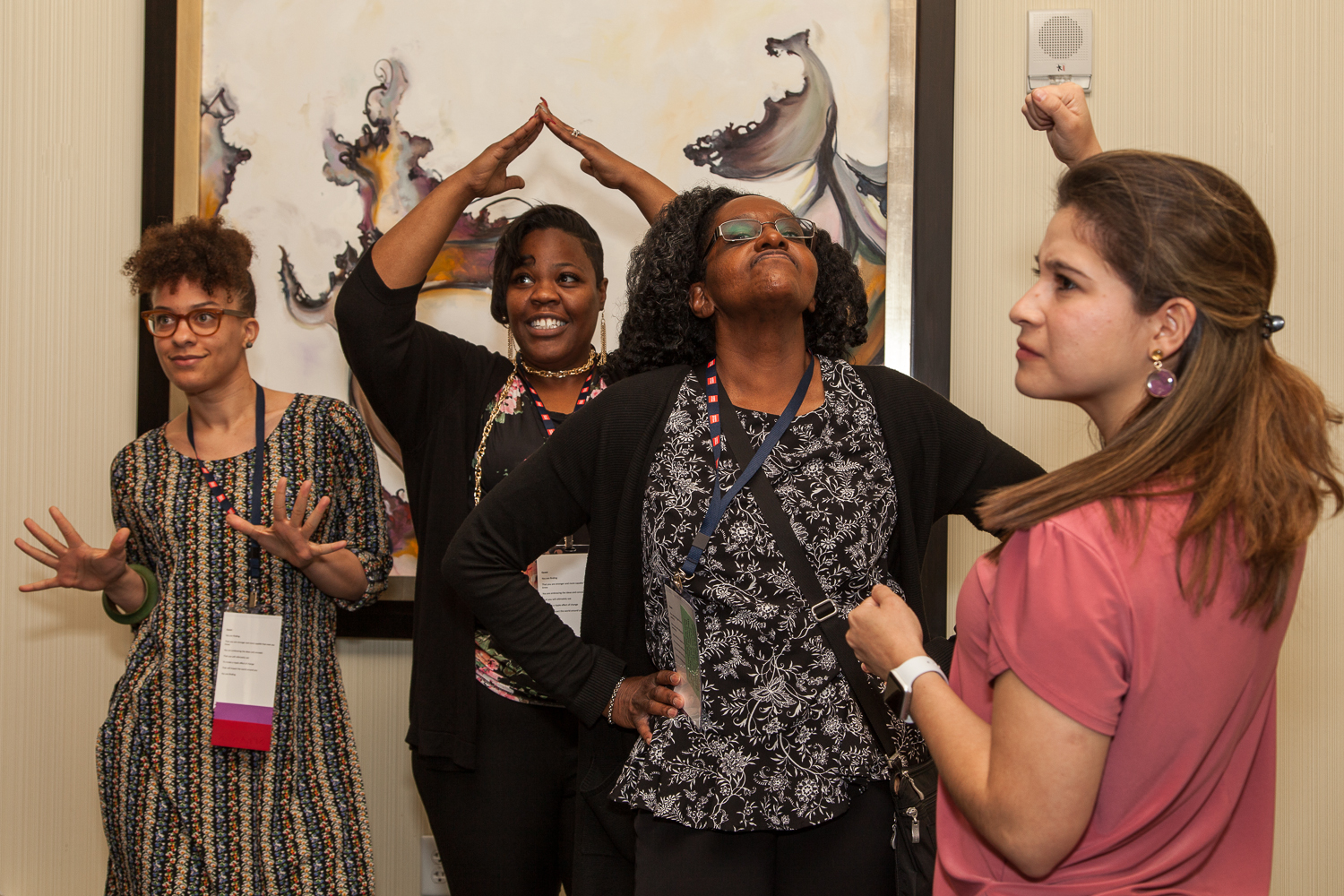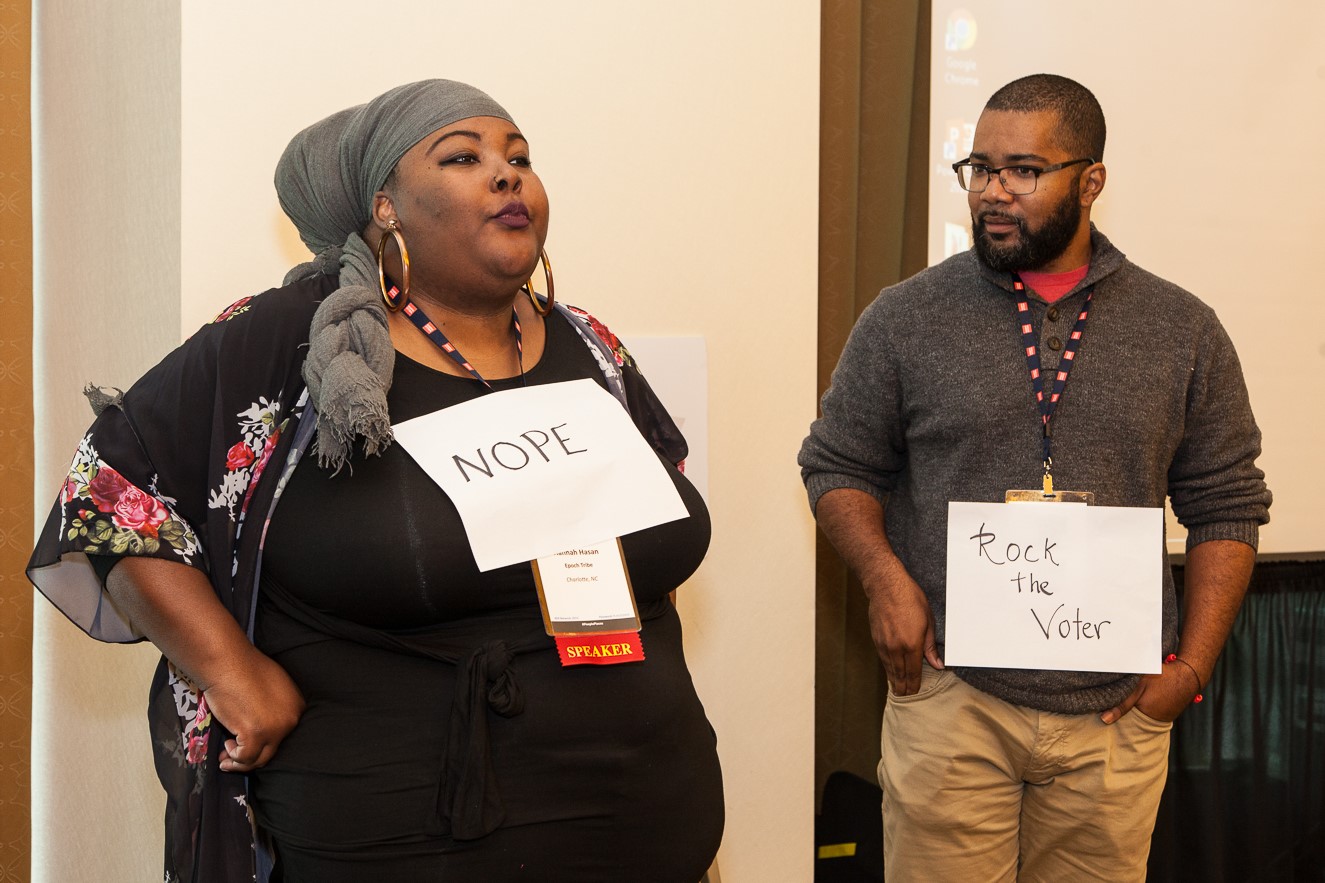| Written by Suzanne Gunther |
People, Places & the Power of Creative Engagement
A major storm knocked out power in the DC area just as People & Places 2019 commenced. Two hundred people were gathered in a windowless room for a pre-conference workshop on racial equity when the lights and AV went out. It was dark, hot, and getting stuffier by the minute. We struggled to hear the panelists as they began a discussion on using nontraditional practices to advance racial equity. I was one of the conference organizers. The hour-long panel discussion was clearly not going to work in the dark, and my mind was racing through potential solutions. Then, the presenters rearranged their plan on the fly and decided to switch to a nontraditional unconventional practice of their own – an interactive theatrical exercise, no power necessary. We guided participants upstairs to the light-filled hotel atrium. Then, I ran off to a back office to check with hotel staff, who were pulling out gas grills to cook lunch for more than 500 attendees. When I returned, I found teams of conference participants scattered around the atrium and balconies – anywhere with morning daylight. They were using their bodies to create “living pictures” of racial equity challenges. One person would step out of the picture and change something to make the scene more equitable. Then, that person would step back in and somebody else would take a turn. Every gesture and scene brought groups closer to envisioning their equity goals.
The living picture exercise was just one of the creative components to People & Places 2019. Arts, culture, expression, and the power of place were woven throughout the three-day event, which brought together community development practitioners from different backgrounds, places, and national networks. These creative components modeled ways to leverage the power of arts and culture by integrating new ways of working into existing community development practice. The power that arts and culture bring to community development goes well beyond what happens at a conference. Grassroots organizations use artistic, culturally-specific, and creative techniques every day in their communities. They may not call it “creative placemaking” or “art” but they, nevertheless, are building on a community’s culture and creative spirit to raise up its purpose and potential. At People & Places, we learned models across the country, including a partnership between Woodlands Development Group and bcWorkshop in Thomas, West Virginia. Together, they creatively engaged residents and incorporate local arts as they chart their path forward for affordable homes, local economic growth, and equity. 
People & Places participants also got to experience arts-based strategies during the conference. Artists were sprinkled among the more traditional expo booths showcasing the work of nonprofits and financial institutions. At one booth, an artist engaged conference participants in completing the thought “I feel safe when …” I saw animated, expressive conversations at that expo booth. And those deep conversations came even in the artificial setting of a conference hotel. Imagine the power of expression that would arise when discussing “I feel safe when…” in your neighborhood. Artist facilitator Mallory Nezam also set up an “Act Out Room” in a board room with glass walls. We invited small groups to stop by and use the “living pictures” technique to envision solutions to their own personal roadblocks. As I walked by and peeked through the glass, I was struck by how engaged everyone in the group looked as they worked through each other’s struggles. And I know from talking with artists who do community engagement that these techniques consistently spark participation. We also embedded artistic techniques into conference sessions. When presenting on community engagement and organizing, Scott Oshima of the Japanese American Cultural & Community Center got the whole room literally humming. Together, we created a strong, unified sound, then Scott told us to take a breath when we needed it. We experienced how we could collectively hold a strong pitch for long time and individually take respite when needed, just as community activists support each other and keep the momentum strong.
At the close of People & Places 2019, Hannah performed For Those Who Hold Space, recognizing the perseverance of those working to advance racial equity in disinvested communities. Her heartfelt words inspired a diverse group of community developers from all over the country to feel part of a movement. As we prepare for People & Places 2021, I’ve been reflecting on the ways that creative engagement sparks more meaningful and equitable interaction among diverse people. While NACEDA does not run local community meetings or develop local projects, we do have a similar challenge to local community development practitioners – to encourage people from different backgrounds, places, and networks to think in new ways and work together to advance racial equity and positive outcomes in communities. I’m inspired by the power of creative engagement to spur people to interact differently, see the world through each other’s eyes, and work together to create more equitable and prosperous communities. Photos by Lise Metzger |


 NACEDA Communications Director Suzanne Gunther reflects on her experience of artistic engagement at
NACEDA Communications Director Suzanne Gunther reflects on her experience of artistic engagement at  As I watched, I felt the power that creative people, artists, and innovative community developers can bring to a situation when most people would throw up their hands. I watched people fully engaged in working together creatively toward a shared vision. To be clear, these living pictures were not created by trained artists. They were community development practitioners, your colleagues and mine, led by artist facilitator Mallory Nezam and PolicyLink.
As I watched, I felt the power that creative people, artists, and innovative community developers can bring to a situation when most people would throw up their hands. I watched people fully engaged in working together creatively toward a shared vision. To be clear, these living pictures were not created by trained artists. They were community development practitioners, your colleagues and mine, led by artist facilitator Mallory Nezam and PolicyLink. During a session on voter engagement, Hannah Hasan performed her inspiring poem,
During a session on voter engagement, Hannah Hasan performed her inspiring poem,